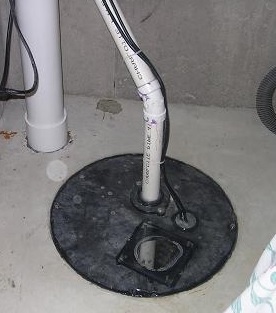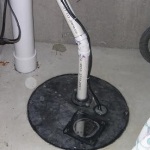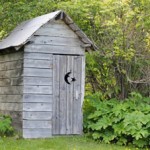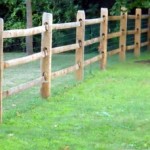Sump Pump Installation Cost
Average Materials Cost: $450 to $700
Average Labor Cost: $600 to $1,200
Avg. Time to Complete: A typical sump pump system will take 1-2 days with a crew of 2 people and the right tools.
Usually Includes: Sump pump, sump crock or basin, PVC drain pipe, electrical wire and outlet, pea stone and the labor and equipment needed to install a residential sump pump and drain.
 it comes in contact with while leaving behind mold issues. The drain tiles around the foundation of the home drain excess rain water into the sump crock, and when the float on the pump is triggered, the water is pumped through pipe to a safe distance outside the home.
it comes in contact with while leaving behind mold issues. The drain tiles around the foundation of the home drain excess rain water into the sump crock, and when the float on the pump is triggered, the water is pumped through pipe to a safe distance outside the home.Replacing a sump pump in a system that has already been installed can be quite easy. It’s a matter of turning off power to the outlet into which the pump is plugged, bailing water out of the sump crock, removing the old pump, attaching the new pump and plugging it in, then turning power back on.
In this Installation Cost Guide, we’re going to discuss the cost of installing a sump pump when no pump exists. This involves cutting into the basement floor just for beginners. It’s a lot of work, but the installation of a sump pump can save you from the messy and expensive results of a flooded basement.

Most Sump Pump Installations Include These Items
When a sump crock, pump and pipes are installed, the contractor will provide you with an itemized estimate that includes these project steps:
- Cutting a hole for the sump crock – A concrete saw will have to be used for this dusty, loud job.
- Installation of a sump crock – This crock will need to be connected to drain tile that will collect excess water. Sump crocks are available with sealable tops to prevent radon gas from entering the basement through the crock.
- Installation of a submersible pump – The pump is sealed and water-tight, so it can be submerged to pump away the most water.
- Pipe exiting the house – The water in the crock must be pumped out of the home. Typically, it is pumped up and through the foundation wall, and this requires boring a hole in the wall.
- Dry crock outside the home – Most contractors dig a hole at a distance of six to 12 feet from the foundation and fill it will sand, pea stone, drain stone or a combination of materials that drain well.
- An outlet – If no suitable outlet exists for plugging in the sump pump, one will have to be installed.
You might also want to consider including a Battery backup unit in the system you install, especially if water in your basement has been an issue. The battery backup unit will keep the sump running for a period of time should the power go out during a strong storm, the very time you need the sump pump to be doing its job.
Tools and Supplies Used by Professionals
One of the problems with DIY sump pump installation when a crock must be cut is that most homeowners don’t have a concrete saw. Here is what is required to do the work:
- Concrete saw with diamond blade and dust-catching bag
- High-speed concrete bore for making the hole for the drain pipe
- Spade for digging out the sump crock hole
- Spade or backhoe for digging the exterior drain crock
- PVC drain pipe, connectors and glue
- Material for the crock outside your home
Factors that Affect Cost
No two jobs are the same, so the specifics of your project can only be determined by a contractor when formulating an estimate for the work. Here are the factors that will determine whether your sump pump installation costs will be about average, higher or lower.
- Whether you’re replacing a pump or installing an entire system – This is the major factor, of course. Replacing an existing pump will cost $150 to $300 depending on if you do it or hire a pro.
- How large the exterior dry crock is – The crock the sump drains into will be sized based on the amount of water it has to handle. If your sump pump runs a lot, a larger crock will be needed, and more labor and material will be required. You may not need an exterior crock dug is there is a drainage pond on your property that will be suitable for use or your soil is especially sandy.
- The capacity of the sump pump – They are available in ¼, ½, ¾ and 1 horsepower sizes. The size you’ll need is directly rated to the amount of water it will need to pump away and the height of the pipe it will be pumped through.
- Cutter or drill rental – Most contractors own their own equipment, but if one of these tools has to be rented, it can increase the cost by several hundred dollars.
- The installation of a battery backup system – These systems are optional. If your basement has flooded in the past, they are well worth the extra expense of $200 to $350. Some sump pumps come with an integrated battery backup.
- A suitable outlet – If you need to run a new outlet for your sump pump, expect the cost to be an additional $125 to $200.
Ways to Save Money on Sump Pump Installation
Even if you’re not going to tackle the entire project yourself, you can save money by doing some of the labor. Here are a few suggestions.
- Dig the trench for the drain line and the dry crock outside your home
- Rent an impact drill and drill the drain hole yourself
- Run the electric line and install the plug yourself, but only if you have experience with that type of work
- Get multiple estimates from contractors in your area who know they’re competing for the work
Do you have other ideas for saving money on sump pump installation? Share them below and join the discussion!
Resources to Learn More about Sump Pump Installation
Free DIY Home Improvement includes a diagram that shows the entire sump pump system.
House Logic provides an overview of the difference between a submersible pump and an alternate option, a pedestal pump.
Cabin DIY has quite a few pictures to help with installing a sump pump correctly.
Radon Seal lists ten reasons sump pumps fail, and one of them might save you from a costly repair.
Tagged With: basement, sump pump

 Over the Range Microwave Installation Cost
Over the Range Microwave Installation Cost Sump Pump Installation Cost
Sump Pump Installation Cost Septic Tank Installation Cost Comparison
Septic Tank Installation Cost Comparison Split Rail Fence Installation Cost
Split Rail Fence Installation Cost